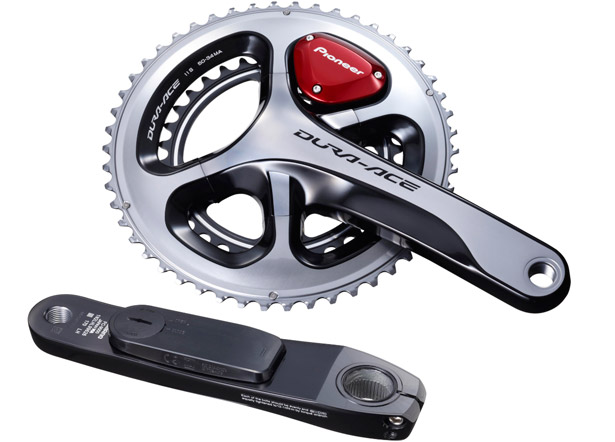 A cycling power meter is a device attached to your bicycle that measures the power output of the rider. Most cycling power meters use strain gauges to measure the torque applied, and when combined with angular velocity, calculate power.
A cycling power meter is a device attached to your bicycle that measures the power output of the rider. Most cycling power meters use strain gauges to measure the torque applied, and when combined with angular velocity, calculate power.
The technology was adapted to cycling in the late 1980s and was tested in professional bicycle racing i.e.: the prototype Power Pacer (Team Strawberry) and by Greg LeMond with the SRM device. This type of power meter has been commercially available since 1989.
Power meters using strain gauges are mounted in the bottom bracket, pedals, rear freehub, or on your crankset. Certain newer devices do not use strain gauges and instead measure power through handlebar-mounted units that utilize the principles of Newton's Third Law by measuring a cyclist's opposing forces (gravity, wind resistance, inertia, rolling resistance) and combining these with velocity to determine the rider's power output.
Training using a power meter is increasingly popular. Power meters generally come with a handlebar mounted computer that displays information about the power output generated by the rider such as instantaneous, max, and average power. Most of these computers also serve as all-around cycling computers and can measure and display heart rate as well as riding speed, distance and time.
Power meters provide an objective measurement of real output that allows  training progress to be tracked very simply - something that is more difficult when using, for example, a heart rate monitor alone. Cyclists will often train at different intensities depending on the adaptations they are seeking. A common practice is to use different intensity zones. When training with power, these zones are usually calculated from the power output corresponding to the so-called lactate threshold or MAP (maximal aerobic power).
training progress to be tracked very simply - something that is more difficult when using, for example, a heart rate monitor alone. Cyclists will often train at different intensities depending on the adaptations they are seeking. A common practice is to use different intensity zones. When training with power, these zones are usually calculated from the power output corresponding to the so-called lactate threshold or MAP (maximal aerobic power).
Power meters provide instant feedback to the rider about their performance and measure their actual output; heart rate monitors measure the physiological effect of effort and therefore ramp up more slowly. Thus, an athlete performing "interval" training while using a power meter can instantly see that they are producing 300 watts, for example, instead of waiting for their heart rate to climb to a certain point.
In addition, power meters measure the force that moves the bike forward multiplied by the velocity, which is the desired goal. This has two significant advantages over heart rate monitors:
- An athlete's heart rate may remain constant over the training period, yet their power output is declining, which they cannot detect with a heart rate monitor;
- While an athlete who is not rested or not feeling entirely well may train at their normal heart rate, they are unlikely to be producing their normal power—a heart rate monitor will not reveal this, but a power meter will. Further, power meters enable riders to experiment with cadence and evaluate its effect relative to speed and heart rate.
Power meters further encourage cyclists to contemplate all aspects of the sport in terms of power because power output is an essential, quantitative link between physiological fitness and speed achievable under certain conditions. A cyclist's VO2 max (a proxy for fitness) can be closely related to power output using principles of biochemistry, while power output can serve as a parameter to power-speed models founded in Newton's laws of motion, thus accurately estimating speed.
The joint application of power meters and power models has led to increasingly more scientific analyses of riding environments and physical properties of the cyclist, in particular aerodynamic drag.
- Printer-friendly version
- Log in to post comments
- 1218 views